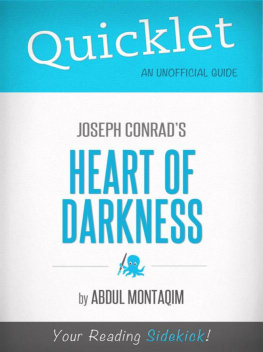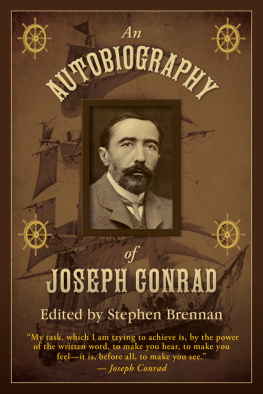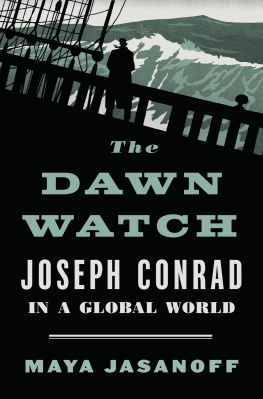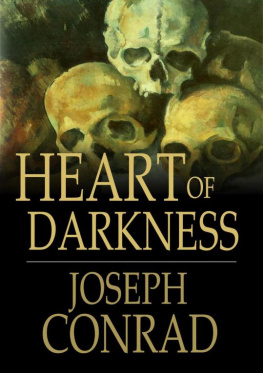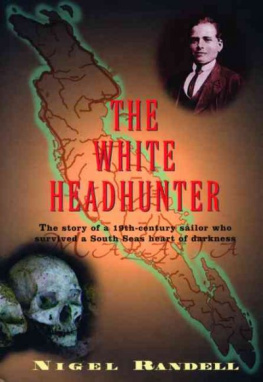Quicklet: Joseph Conrad's Heart Of Darkness
Introduction
When I first read Joseph Conrads Heart of Darkness in my early 20s, a part of my psyche immediately recognized and understood the sheer importance of Joseph Conrads masterful book.
The journey taken by the books protagonist, Charles Marlow, who travels up a river on a steamboat, reminded me of travelling by boat in Bangladesh when I was a child.
When I was nine years old, my parents took me on a long holiday to Bangladesh, the land of my birth. I had no recollection of what life was like there, because I had left when I was three. One of the most enduring experiences from that holiday was staying in my mothers village, which was mostly under water for around half the year. As a consequence, the villagers got from place to place on boats.
I remember taking many journeys on water, along rivers, across lakes, and around flooded villages. Once, I took a boat journey that lasted several days and nights. I even traveled on a boat similar to the steamboat in the novel.
Time ebbs and flows when you are on or near water. There is nothing like that feeling of being on a boat, the gentle pace at which they move. The wonder with which even experienced crew members looked around and studied their surroundings, sometimes in trepidation and sometimes in awe, is captured perfectly in Heart of Darkness .
Conrads characters speak and behave precisely the way people move and talk when traveling by boat deep into unknown territory. Marlow and his crew travel deeper than most, into the darkest corners of Africa.
The Life of Joseph Conrad
Born in the Ukraine in 1857, Jzef Teodor Konrad Korzeniowski was part of the Polish nobility. His wealth was great, but he did not live an easy life.
In fact, Conrads personal story was arguably more dramatic, intriguing and dangerous than the stories he wrote in his books. Indeed, Heart Of Darkness is widely believed to be an autobiographical work, published in 1903 when the author was living in Britain and using his Anglicised name of Joseph Conrad.
Conrads father was a political playwright in Poland who was arrested by Imperial Russian authorities for helping to plan the January Uprising of 1863-1864. The entire family was exiled to a remote location north of Moscow. There, both of Conrads parents died, leaving him orphaned at the age of 11.
At the age of 16, Conrad travelled to Marseille, France and began his career as a seaman. This experience deeply influenced his later writings, as most of his stories are set on boats and water. Later in his seafaring career, Conrad moved to England, taking jobs on British ships, and eventually earned himself a Master Mariner certificate and British citizenship.
Some years later, he captained a steamboat in Congo. It was that experience and his knowledge of the atrocities that occurred in that country that fueled the undercurrent of evil running through Heart of Darkness .
At the age of 36, Conrad decided to dedicate himself to writing. Heart of Darkness , his most famous work, was published as a novella in 1903, having been already published as a three-part series in a British publication called Blackwood's Magazine .
Conrad died of a heart attack in 1924. By the end of his life, he had written some 20 novels and novellas, 26 short stories, and six memoirs and other autobiographical works.
The Historical Significance of Heart of Darkness
Joseph Conrad wrote Heart of Darkness during the heyday of European colonialism. It is believed to be based on his experience as a steamboat captain in the Congo, although he does not name the location in the book.
Conrad does provide clues as to the origins of his story. He opens the book by giving a precise location for some of his characters, who are on board a small sailboat called the Nellie, anchored in the Thames Estuary on the outskirts of London. Incidentally, Conrad was known to have sailed on a British yawl called Nellie in real life.
Marlows journey on the river in search of Kurtz echoes the real-life story of the explorer Henry Morton Stanley, who set out to find David Livingstone, a medical missionary based in Africa, and considered a national hero in Britain in the late 19th century.
Heart of Darkness has many complicated layers. On the surface it is a tale of the dirty and dangerous world seafarers endured in the late 1890s. But when one looks deeper, it is possible to recognize the story of European colonial activity in what was then referred to as the Dark Continent Africa. The also explores the theme of entrepreneurialism, centered on the African ivory trade.
Most enduringly, Heart of Darkness is an exploration of the human psyche, and, specifically, its capacity for evil. The book is considered by many to be one of the most important works of fiction ever written.
A Summary
Heart of Darkness opens with the image of a small sailboat called the Nellie anchored in the Thames Estuary. On board are several men, one of whom is Charles Marlow, the protagonist. The other crew members listen while Marlow tells the tale of his visit to deepest, darkest Africa on a quest to find and bring back a mysterious ivory trader called Kurtz.
Marlows story begins with the start of his job with the Company in Africa. Upon his arrival, he reported to the general manager of the Central Office and found out that his first assignment was to travel by steamship up the river and return with ivory and of course, Kurtz.
Kurtz had become extremely successful in the ivory trade and had developed a way of life built around a group of natives who revered him. He ran the Companys Inner Station further up the river. He had lately gone missing the Company was unable to keep him under control and Marlow was tasked with bringing him back in hand.
Marlow set off on his assignment with the general manager, three white agents, and several natives. On the long and difficult journey, Marlow learned more about Kurtzs reputation when he overheard the general manager tell another crew member that Kurtz was too influential, and a threat to the general managers powerful position.
A few miles before they reached Kurtzs station, on the river side, they found some firewood and a note warning them to approach cautiously. Soon after, the steamboat was attacked from the banks of the river by natives who threw spears and shot arrows at the crew. Marlow managed to scare the attackers off by blowing the steam whistle, then continued his journey.
Eventually, the crew arrived at the Inner Station, which they found to be surrounded by the severed heads of countless natives. The area emitted an oppressive sense of unspoken evil.
The crew was greeted by a man dressed vaguely like a harlequin. He was a disciple of Kurtz, who seemed to be treated by the natives as though he were a god. Seeing the severed heads and learning more about Kurtz, caused Marlow to form an opinion of him as a man who lacked restraint.
Nonetheless, after meeting Kurtz, Marlow couldnt help but think of him as a remarkable man with a substantial voice. He even took Kurtzs side in some arguments.
Kurtz revealed himself to be seriously ill, and agreed to leave with Marlow and the crew on the steamship. As they made their back along the river, Kurtz became increasingly prone to mood swings and mad ravings. He lost his sight and moved closer to death. Marlow observed that Kurtz's facial expression changed as his life was ebbing, ebbing out of his heart into the sea of inexorable time.
Kurtzs last words are among the most famous in literary history. The horror! The horror! he cried. The words grew to haunt Marlow, who wondered what Kurtz could have meant.

